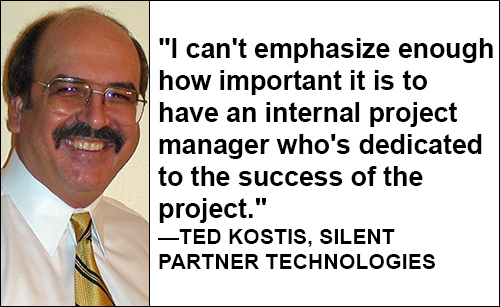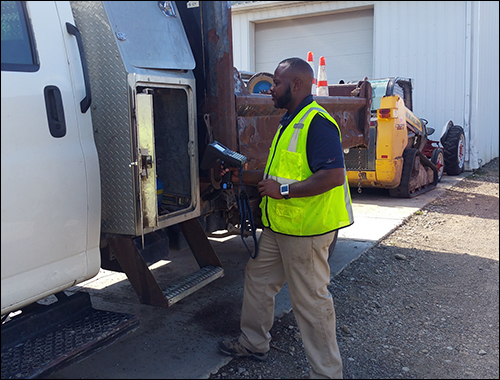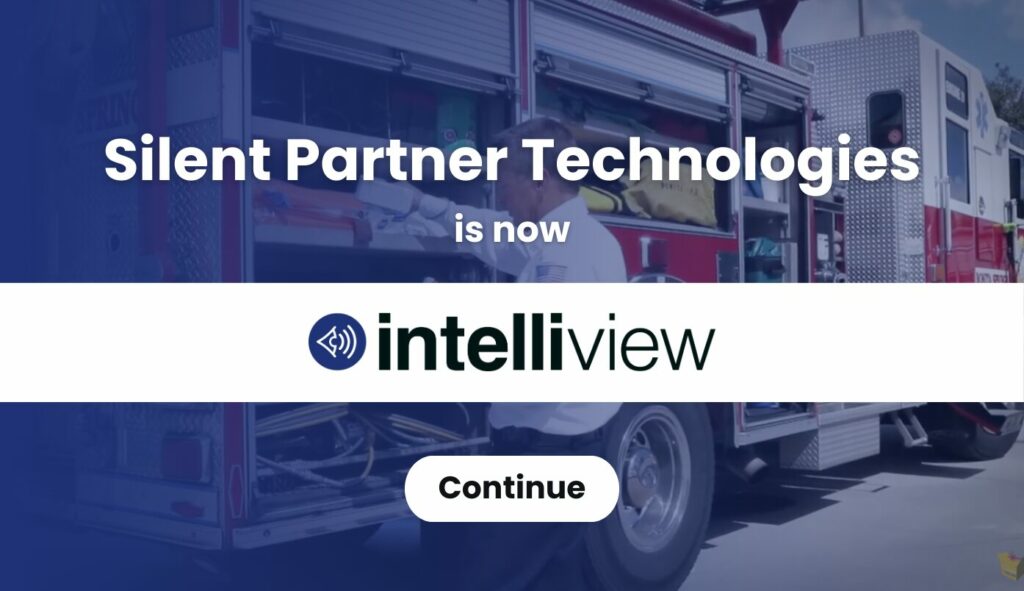Landscaping Tool Tracking
Landscaping Tool Tracking. In the U.S. Marines, everything has a process, says Brian McGrady, head of facilities at Environmental Management, Inc. He should know. McGrady served in the Corps for 21 years, managing logistics, including an eight-month tour in Iraq where he helped supply a battalion of 1,000 Marines. And, according to McGrady, “a good process is vital in the Marines. Now he sees RFID-enabled asset management processes as the key to EMI’s success.
But before McGrady came on board, the processes were lacking at EMI, a $25 million company based in Plain City, Ohio, which provides landscaping and property maintenance services to homeowners and businesses throughout central Ohio. EMI’s managers wanted to double the company’s revenues within a few years, but managing the inventory was a barrier to growth.
The team used epoxy resin to attach tags to some tools and electrical tape to attach them to others, relying on tests conducted at EMI to determine which would be the least intrusive when using a particular tool while remaining in place without damaging that item.
“We had no accountability,” McGrady recalls. When tools were inevitably lost, there was no way to find out where they had ended up. Often the company had no choice but to reorder the lost tools, wasting money.
Each landscaper’s managers had to do inventory counts once a week, says McGrady, but the manual process was no longer possible. Crew managers filled out paper forms, and McGrady and an assistant needed at least three hours a week to update the spreadsheets. “Many of the forms were illegible,” he explains. “Often you couldn’t even read who the guy was.” Worse, to stay on schedule, crew managers sometimes estimated the quantities of shovels and other items instead of checking them, resulting in a lack of essential tools on a job.
 The team used epoxy resin to attach tags to some tools and electrical tape to attach them to others, relying on tests conducted at EMI to determine which would be the least intrusive when using a particular tool while remaining in place without damaging that item.
The team used epoxy resin to attach tags to some tools and electrical tape to attach them to others, relying on tests conducted at EMI to determine which would be the least intrusive when using a particular tool while remaining in place without damaging that item.
“We had no accountability,” McGrady recalls. When tools were inevitably lost, there was no way to find out where they had ended up. Often the company had no choice but to reorder the lost tools, wasting money.
Each landscaper’s managers had to do inventory counts once a week, says McGrady, but the manual process was no longer possible. Crew managers filled out paper forms, and McGrady and an assistant needed at least three hours a week to update the spreadsheets. “Many of the forms were illegible,” he explains. “Often you couldn’t even read who the guy was.” Worse, to stay on schedule, crew managers sometimes estimated the quantities of shovels and other items instead of checking them, resulting in a lack of essential tools on a job.
Now, just one year after joining EMI, McGrady has overtaken the company’s tooling and equipment tracking by implementing an RFID asset management solution from Silent Partner Technologies (SPT), based in Lutz, Florida. He estimates that EMI achieved a return on investment of approximately 240 percent in the first year of use alone.
Keeping tools under control

When McGrady interviewed for the position of EMI’s asset and facilities manager in November 2014, the conversation with Gary Clark, the company’s deputy director and co-owner, quickly turned to how to stop the ongoing loss of tools and other equipment and gain control of the company’s weekly inventory process. Clark and the then maintenance operations manager were already considering RFID as a possible solution, and McGrady had experience with equipment tracking technology for the Marines.
Soon after joining the EMI team, McGrady began the task of selling the idea of RFID for asset management to the rest of the company. He first received approval from the management team – including EMI President Mark Wehinger, CFO Tom Kiefer, Landscape Operations Manager Brandon Gepper and Maintenance Operations Manager Jason Hall – and explained how the technology could support the company’s expansion goals.
McGrady then had the more difficult task of getting the sales managers and area managers who would actually use the RFID solution to accept it. At a regular production meeting, he gave them a presentation on RFID-enabled asset management – what it is and what it can do – and showed them how such a system can reduce waste and create value. “It wasn’t an easy thing to do,” he recalls.

The sales managers were immediately receptive to the idea of a new technology that could increase profits, says McGrady. The area managers were more difficult to sell because some employees refused to learn a new process, while others feared the new system might be more time-consuming.
But McGrady knew that the support of all parties involved was crucial to making an RFID system work effectively. So he convinced the division managers with another presentation, explaining how the new system would actually save them time instead of wasting it. He also pointed out that the return on investment – as calculated by EMI controller Tom Kiefer – would result in a higher payment for them. “Production [divisional] managers receive an annual bonus based on profit margin,” McGrady explained, “and this program would be profitable in less than three months.
Reading Continue: Landscaping Company Keeps Tabs on Tools – Part 2
Reference: RFID Journal


